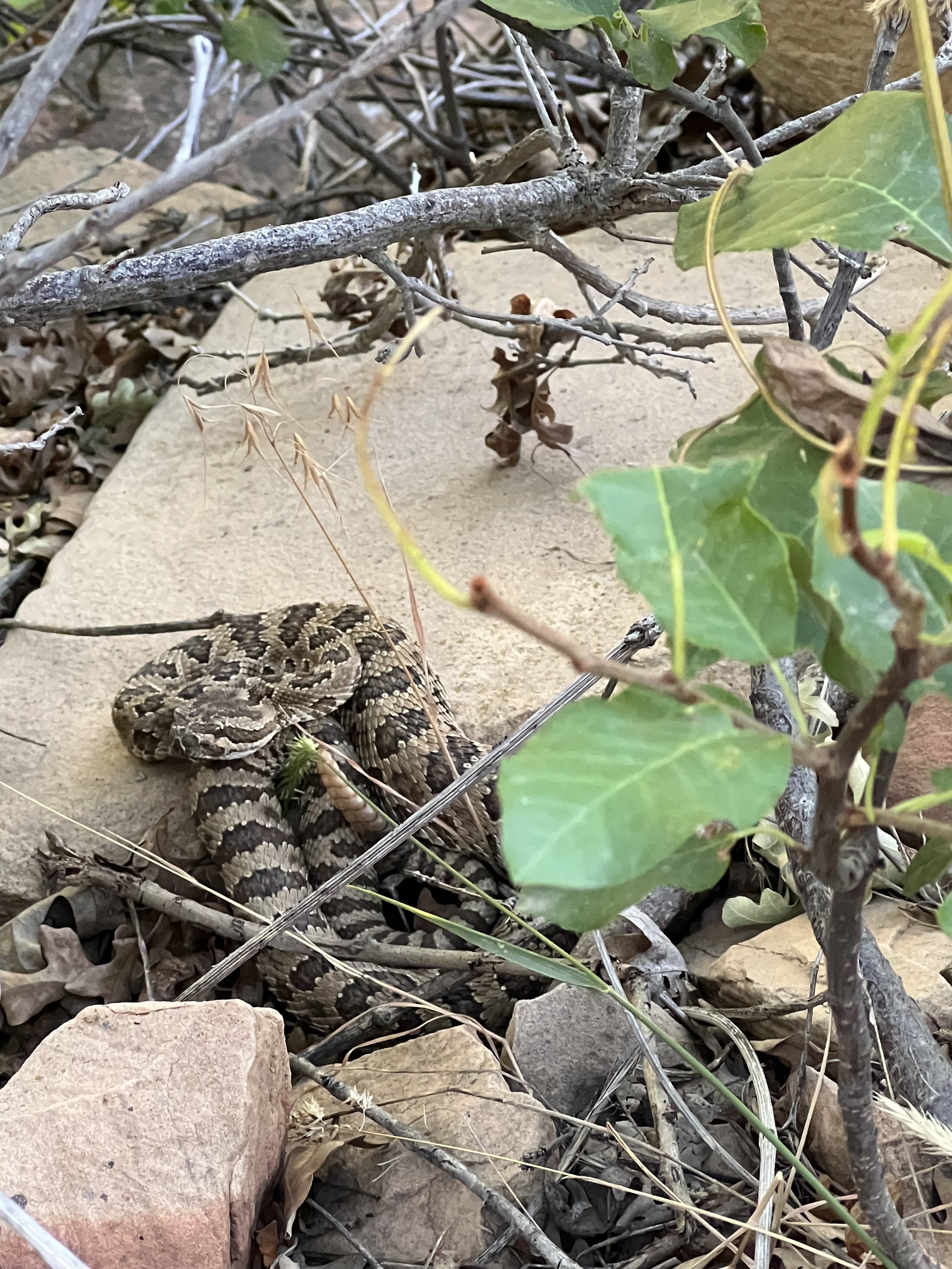K9 Rattlesnake Aversion Training
Utah is a wonderful outdoor playground. It is also home to 5 species of rattlesnake and 3 subspecies. You can encounter a rattlesnake in your yard, on a hike, in a campground, or depending on where you live – in your neighborhood. Dogs are curious and many get bitten by investigating the smell, sound, or movement of a rattlesnake. Unless trained to avoid them, most dogs don’t understand the danger associated with a rattlesnake. Once bitten, the dog could easily die if not taken to a vet asap. Even with treatment, some die. The cost of an envenomation can run from $4000 - $8000 on average.
With a dog’s life at risk, we believe the only way to keep the dog safe is by using an e-collar in association with a rattlesnake that will simulate a bite. For almost all training we believe in positive reinforcement training. But for something as serious and deadly as a rattlesnake bite, a “leave it” is not sufficient.
We train using contained, live rattlesnakes. They have not had the venom sacs removed – this would alter how the snake smells to the dog. The fangs are not pulled out. That is cruel to the snake and it continually grows new ones, making it necessary to repeatedly remove the fangs. They have several rows of fangs that replace broken ones. We believe in kind and humane treatment for the snakes being used. The venom sac “vasectomy” that some use is not always successful and is illegal in many states – we want your dog to be safe. We use sight, sound, and smell so the dog realizes a rattlesnake is present. They will be able to detect the danger using just any of those senses.
We work with each individual dog based on the dog’s temperament, experience with snakes, experience with an e-collar, and how they respond in different situations. We work with all sizes, breeds, and most ages of dogs. We believe puppies need to mature before aversion training so dogs younger than 6 – 9 months are not recommended for aversion training. We will make some exceptions on a case by case basis.
We also train almost exclusively outside. The dog most likely will always encounter a snake outdoors and not in a training room. The air flow is very different outside vs inside. We want the training to be as accurate as possible and give the dog the best chance to use all it’s senses to keep itself safe.
Great Basin Rattlesnake trailside.

